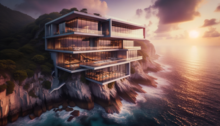OpenAI’s DALL-E is a sophisticated artificial intelligence[1] (AI) model that was unveiled in January 2021. This advanced AI model, a modified version of the GPT-3[2], is capable of producing a wide range of realistic images based on text prompts. Subsequent enhancements to DALL-E have further improved image realism and comprehension of detail. DALL-E employs a mix of AI models, such as CLIP for image sifting, and a vast number of parameters for generating images. Notably, the model can also modify images, complete incomplete sections, and innovatively extend existing content. However, DALL-E’s remarkable abilities have sparked ethical debates regarding algorithmic prejudice, deepfakes, and the repercussions on visual artists. Despite these issues, the advancements made by OpenAI in image generation technology have far-reaching future implications, with ongoing discussions about the ethical boundaries and constraints of AI-created art.
DALL·E, DALL·E 2, and DALL·E 3 are text-to-image models developed by OpenAI using deep learning methodologies to generate digital images from natural language descriptions, called "prompts."
Watermark present on DALL·E images generated on OpenAI's labs | |
 An image generated by DALL·E 3 with GPT-4 based on the text prompt "A modern architectural building with large glass windows, situated on a cliff overlooking a serene ocean at sunset." | |
| Developer(s) | OpenAI |
|---|---|
| Initial release | 5 January 2021 |
| Stable release | DALL·E 3
/ 10 August 2023 |
| Type | Text-to-image model |
| Website | labs |
The first version of DALL-E was announced in January 2021. In the following year, its successor DALL-E 2 was released. DALL·E 3 was released natively into ChatGPT for ChatGPT Plus and ChatGPT Enterprise customers in October 2023, with availability via OpenAI's API and "Labs" platform provided in early November. Microsoft implemented the model in Bing's Image Creator tool and plans to implement it into their Designer app.
